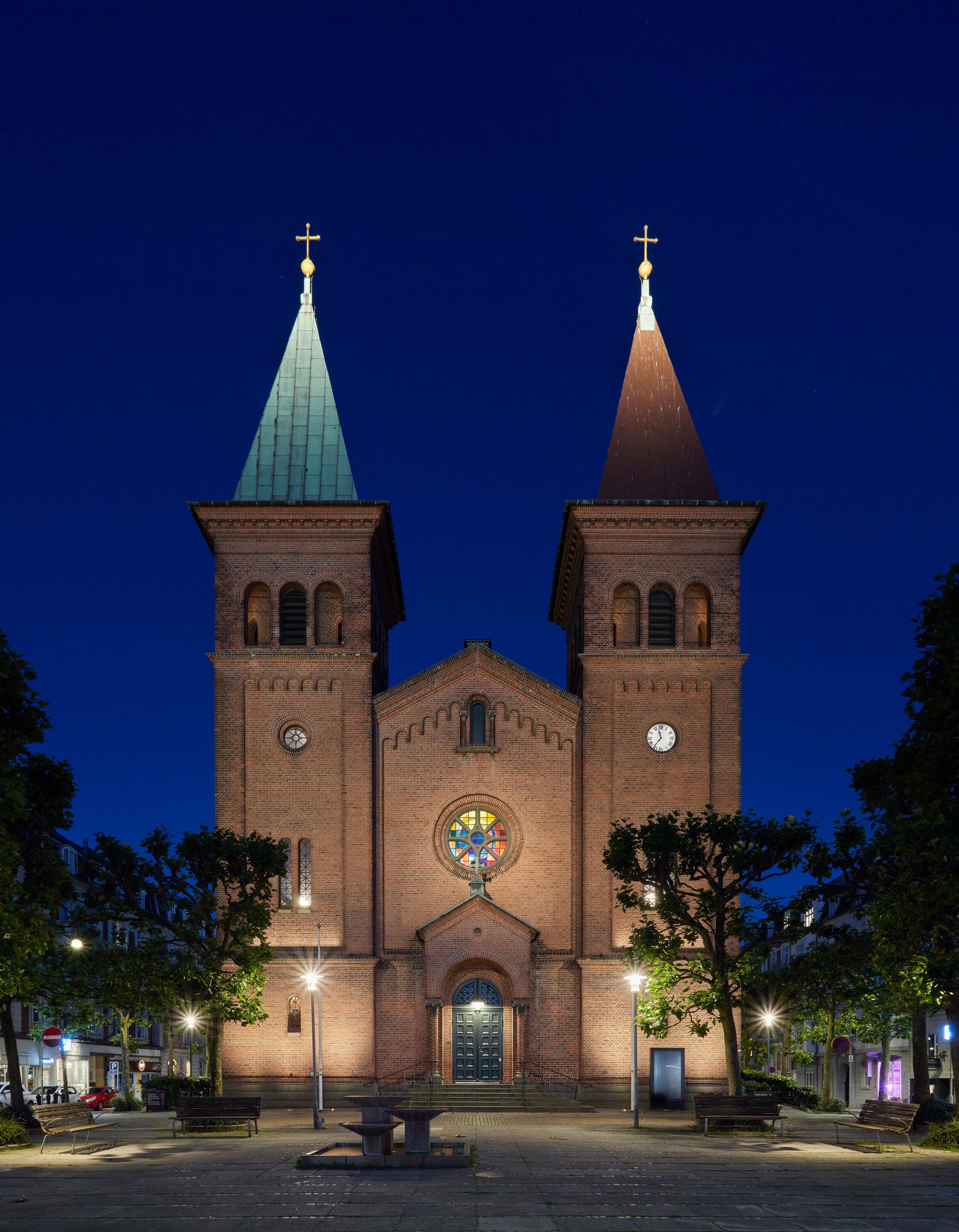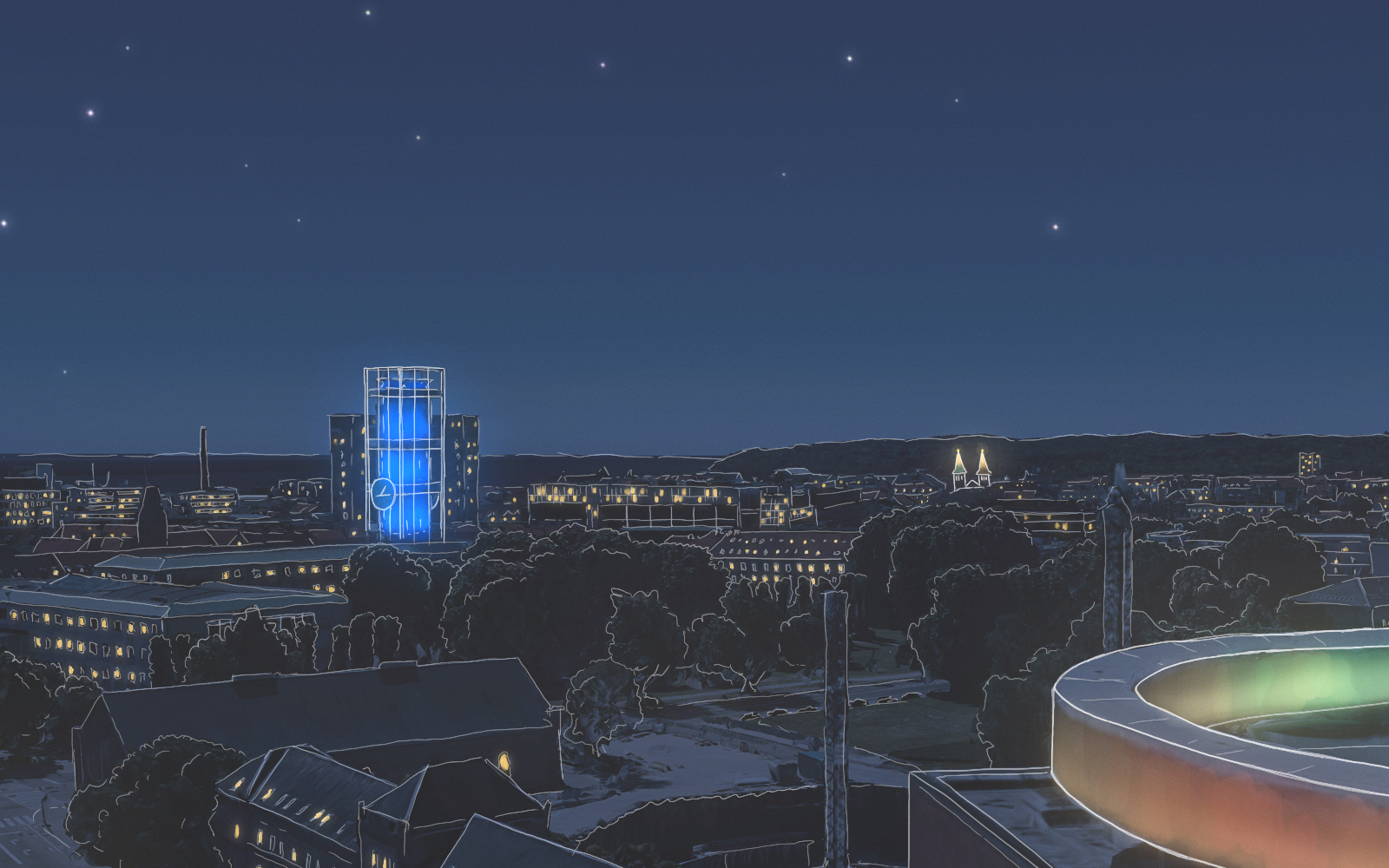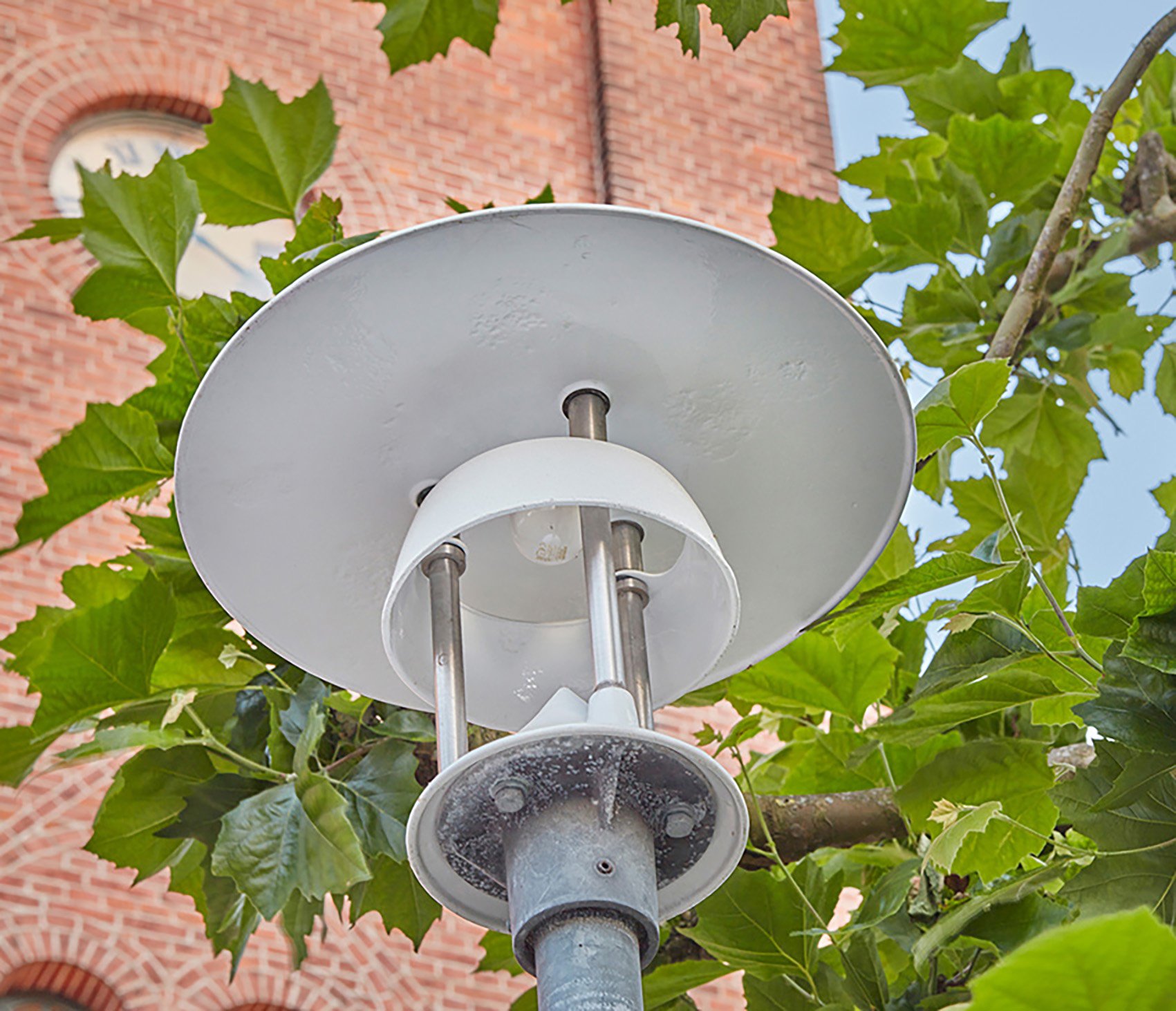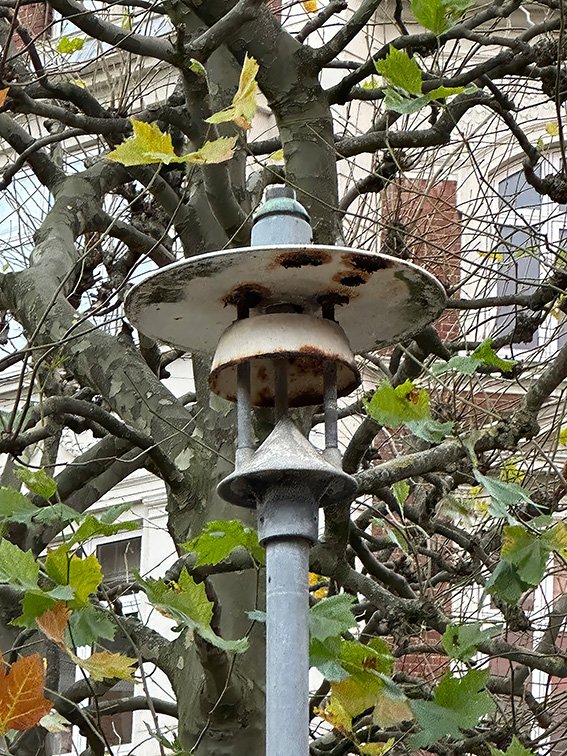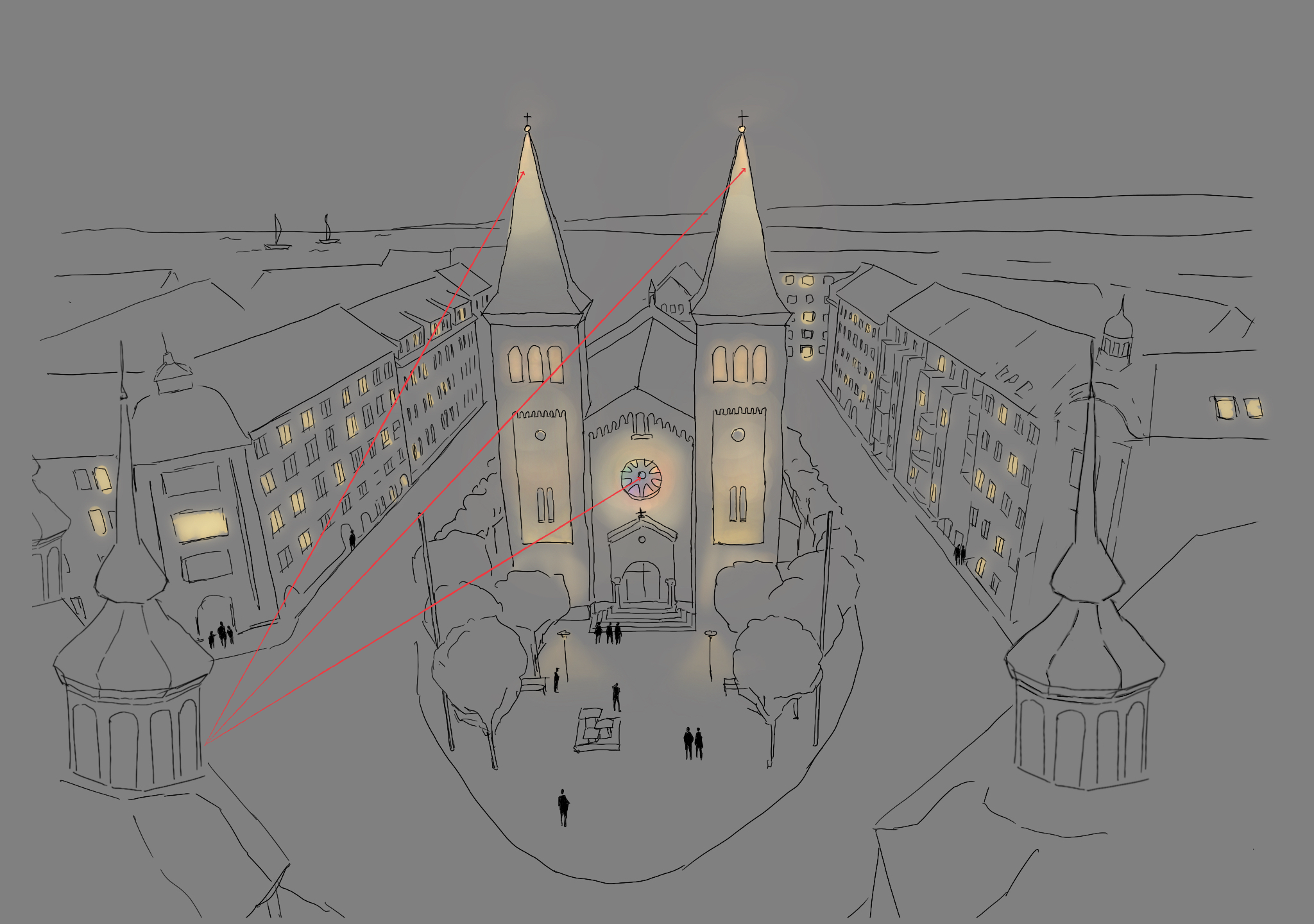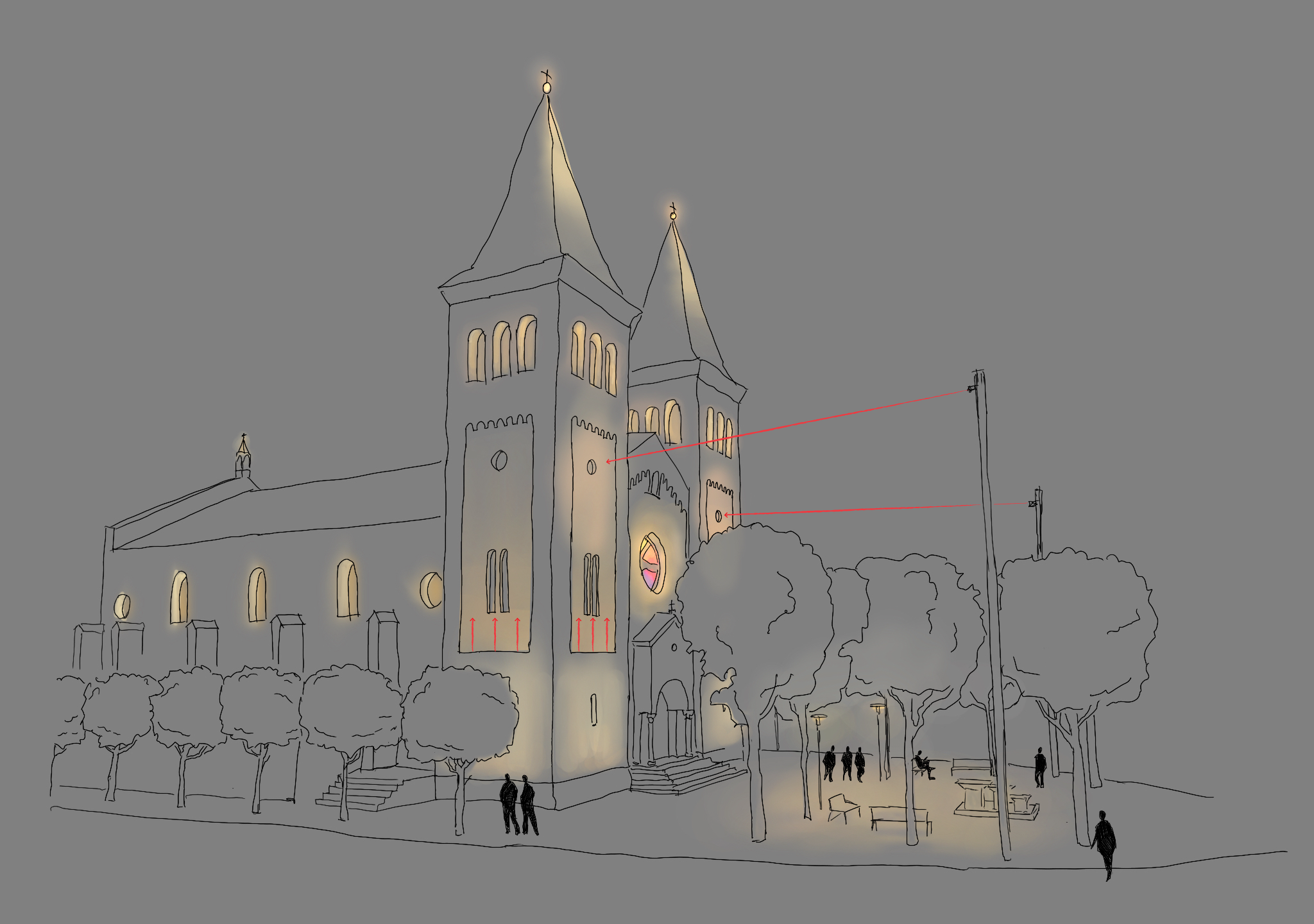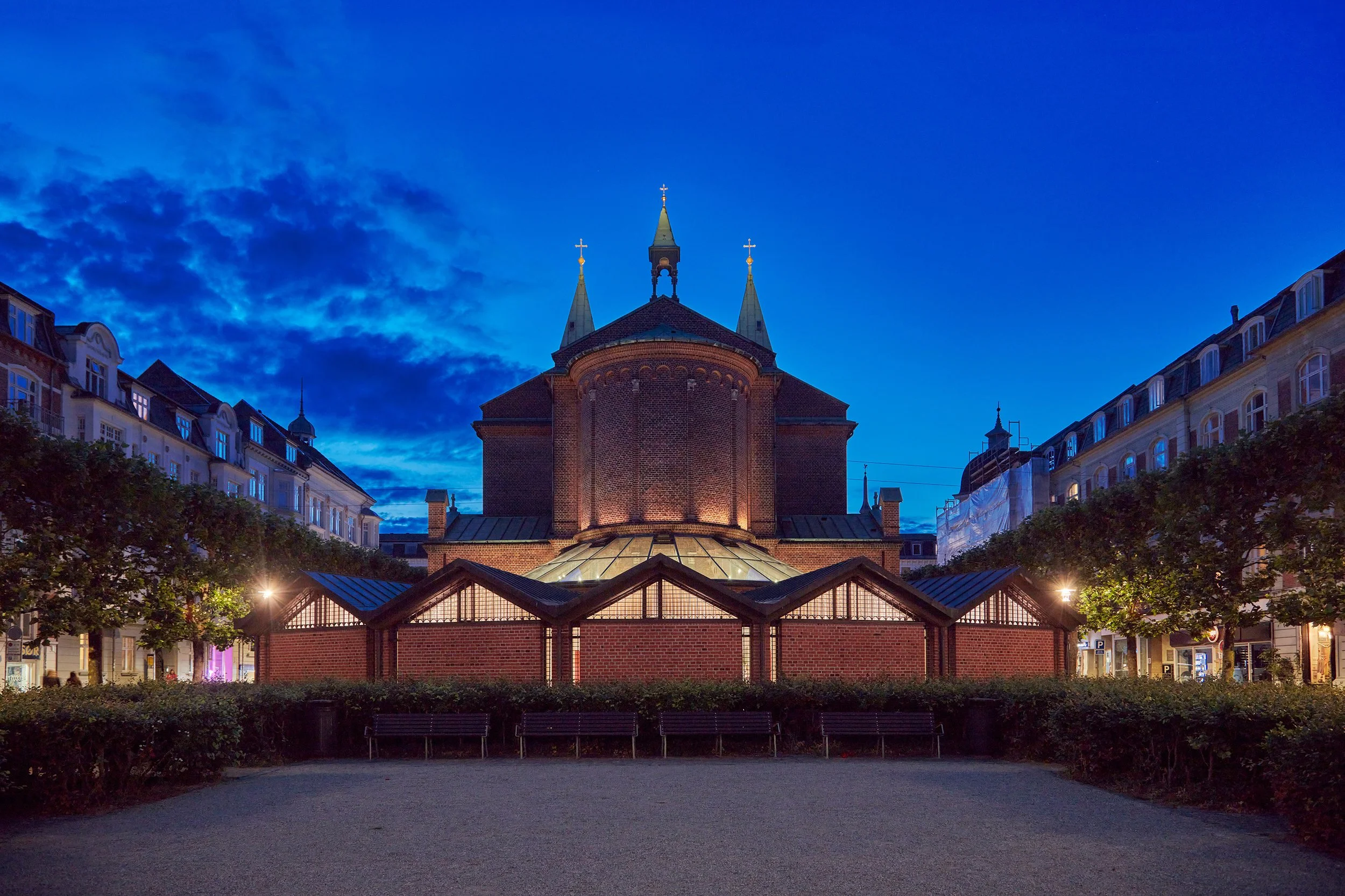SCT. PAULS CHURCH
Sct. Pauls Church is an old, charming, and listed church in Aarhus, illuminated by a series of light layers that highlight the church's details and collectively give it a distinctive character in a natural and understated way after dark. These layers are switched on, one by one, at sunset. During twilight, the light layers are dimmed individually so that the overall illumination of the church continuously matches the darkening night sky.
Client: Sct. Pauls Church and Aarhus Municipality (Lys på Aarhus)
Funded by: Sallings Fond
Type: Outdoor lighting, culture
Electrical Installer: Mariendal El-Teknik A/S
Blacksmith: Design Smedien ApS
Year: 2024
The Church as a Landmark in Aarhus
The lighting of Sct. Paul's Church accentuates the church as a landmark at the end of M.P. Bruuns Gade—directly opposite Arne Jacobsen's illuminated town hall tower, both of which can be seen from the Station Square.
Somewhat unconventionally, Sct. Paul's Church is not oriented east-west but rather south-north. This is due to Councillor M.P. Bruun, who donated the land for the church and stipulated that the church should 'face the city.’
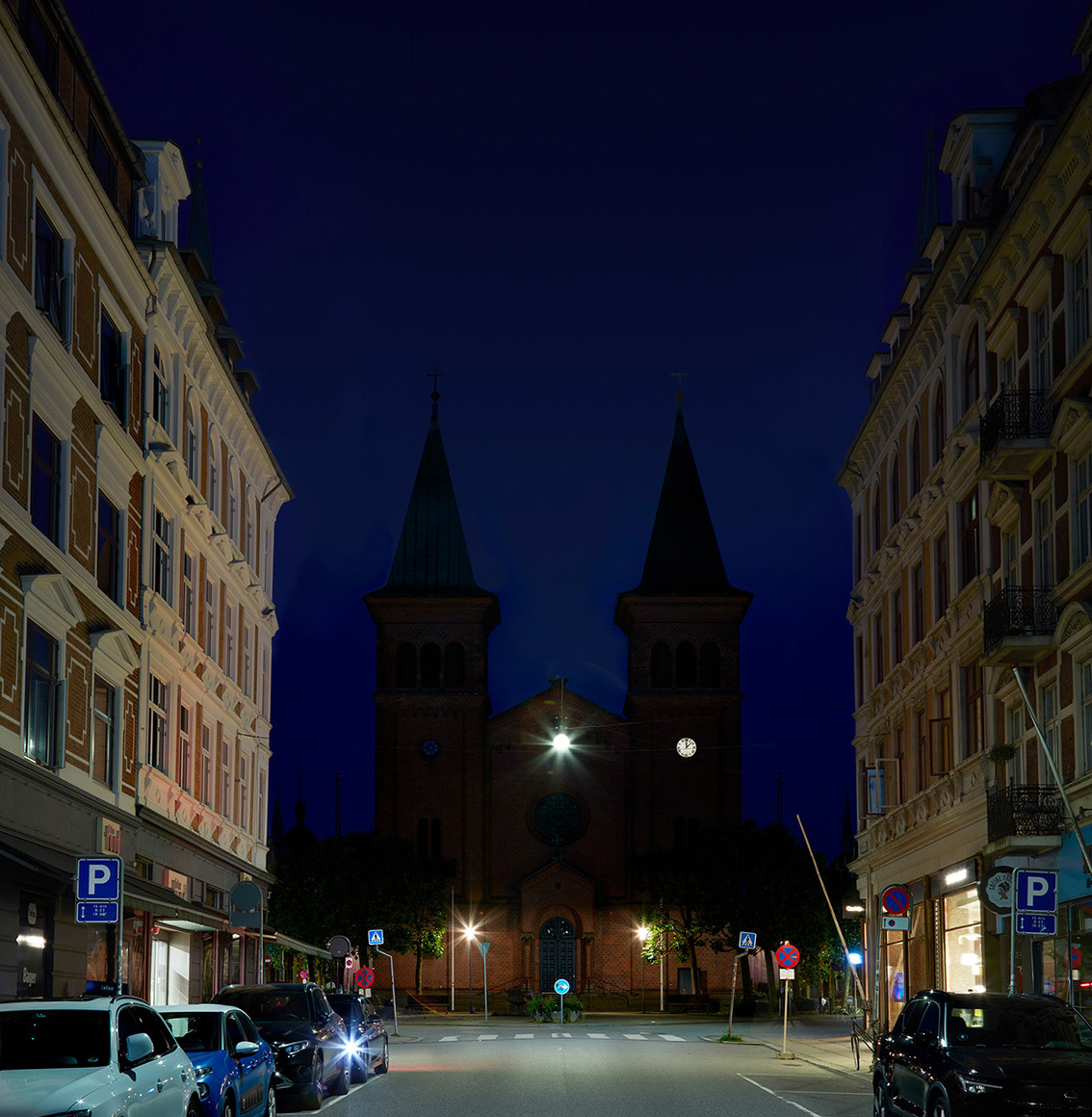
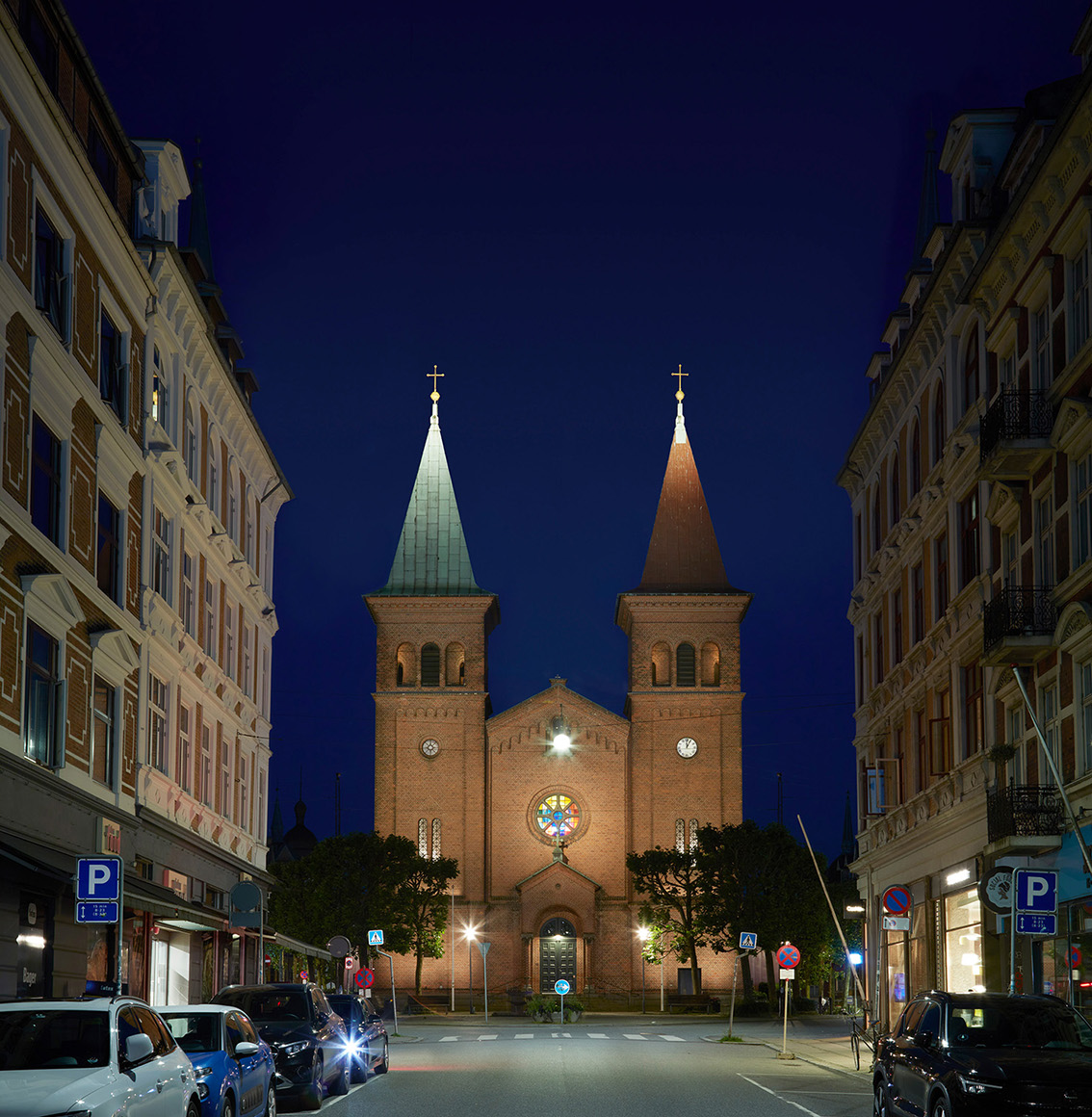
The new lighting is designed to gently bring the church’s 'face towards the city' out of the darkness while softly illuminating the rest of the church to maintain the overall sense of its spatial volume. The lighting is a carefully composed interplay of illuminated details and façade elements, both lit from within and outside, which together define the church. The towers, rose window, apse, and beautiful details emerge from the darkness with the new lighting.
Details
One of the requirements from the heritage authorities was that any new additions had to be reversible. This means that fixtures and profiles are mounted in the brickwork joints, and new cables are also run through the joints, ensuring that the new lighting can be removed without leaving any traces. In the niches of the towers and apse, a specially designed profile made of patinated copper conceals the linear fixtures that illuminate the brickwork. The cross pattern on the profiles softens the contrast between the illuminated wall surface and the unlit profile—a technique borrowed from Moorish architecture that Le Corbusier brought to the north.
Sustainable Lighting
The church’s new lighting consists of 24 layers of light, each illuminating a part of the church. These layers are gradually switched on, one by one, at sunset. During twilight, the light is dimmed so that the lighting on the church continuously matches the darkening night sky.
The lighting project has focused on avoiding unnecessary light pollution. Therefore, all fixtures were carefully selected, tested, and shielded to ensure that only the desired parts of the church are illuminated, without disturbing the neighbours.
Surrounding the church are Poul Henningsen’s original street lamps from the 1930s. Although the lampshades were heavily worn by time, they were successfully restored so that the street lamps are once again part of the church and church square’s lighting, and they will continue to function for many years to come. A skilled blacksmith removed the rust, welded damaged edges, and then the shades were enamelled and reassembled on the original poles.

